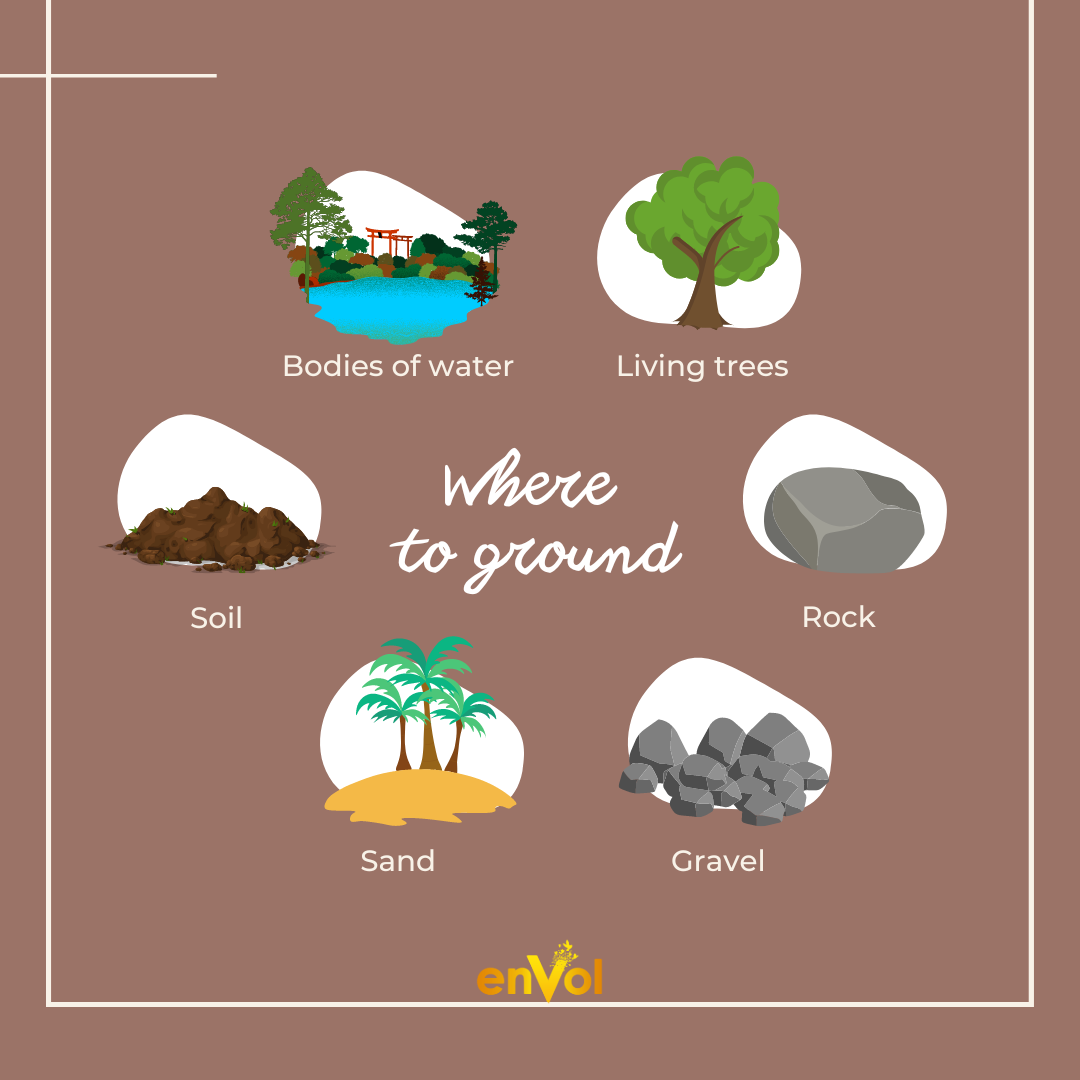You may not ever have heard about earthing but this simple, free practice offers a plethora of health benefits. And today, we need it more than ever. Technological advancements in recent decades have changed our lives: smartphones, tablets, laptops and the internet of things allow us to stay connected 24/7. But these high-tech developments haven’t necessarily made us happier or healthier. In fact, the opposite appears to be true. Research shows that chronic illness and mental health issues are at an all time high.
Part of the reason may be because, despite our virtual biosphere, we have actually become disconnected from the Earth.Our body needs direct, regular contact with the earth to function properly. Grounding, otherwise known as "earthing", is the missing component to health so often overlooked in our fast-paced metropolitan society.
According to this study conducted by the Journal of Environmental and Public health, grounding may be as essential to our health as nutritious food, sunshine, clean air, water and physical activity. Read on to find out about earthing and its innumerable health benefits.

Envol's guide to earthing:
1. What is earthing and why does it work?
This study, conducted by the Journal of Environmental and Public health acknowledges that grounding may be as essential to our health as nutritious food, sunshine, clean air, water and physical activity.
Simply put, "earthing" or "grounding" a therapeutic technique which involves connecting with the Earth. According to Earthing Canada:
“The earth is endowed with “electric nutrition,” a virtually limitless supply of mobile electrons that gives the ground we walk on (as well as our lakes and oceans) a natural negative electric charge.”
When we make contact with the Earth, our bodies receive an influx of these electrons, which act like antioxidants and neutralize free radicals. This yields very beneficial effects on both our physiology and mental-wellbeing.
Grounding is accessible to everyone. It’s as simple as walking or sitting barefoot outdoors.
2. How do I practice earthing?
To practice earthing all you need to do is make direct skin contact with a natural surface such as grass, sand or the ocean. You can also earth by breathing in the air close to waterfalls, oceans, lakes, or taking a stroll in the forest.
Surfaces that will ground you include:
• Soil (Must be touching the earth. Cannot be in an enclosed box or plant pot.)
• Sand
• Gravel
• Rock
• Bodies of water (like the ocean, lakes, and streams)
• Living Trees*
Grounding for at least 20-30 minutes a day is all you need to reap the benefits of earthing. If it’s cold out and you don’t feel like taking off your shoes, consider the following options:
Hug a Tree
The term tree-hugger just took on a whole new meaning! On your next walk in nature, why not ground by touching trees? The grounding effect from a tree isn’t as strong as when you’re in direct contact with the earth because wood is insulating, but it is still generally present.
Conductive Shoes
Most modern day footwear is insulated with rubber soles, which block our body’s ability to connect with the earth. However, certain shoes, such as Earth Runners sandals, allow you to be grounded while wearing footwear. How? Stainless steel is secured to the bottom of the sandal with a cooper plug to keep you grounded. As you wear these shoes, there is efficient electron flow between your skin and the earth via the conductive thread - copper plug circuit.

3. What are the benefits of earthing?
Grounding is one of the key mechanisms which your body maintains equilibrium and health; it has an immensely beneficial impact on every single one of your organs, tissues, and cells. Read on to find out some of the many benefits of this hugely beneficial practice!
Improved Sleep Quality + Increased Energy
In a sleep study, where subjects were grounded overnight using conductive mattress pads for 8 weeks, 11 of 12 participants reported falling asleep more quickly, and all 12 reported waking up fewer times at night. Grounding the body appears to positively affect circadian rhythms, morning fatigue levels and daytime energy.
Decreased pain and inflammation
The study mentioned previously also observed a significant reduction in participant’s pain levels. The influx of free electrons absorbed by the body through direct contact with the Earth likely neutralizes free radicals, thereby reducing acute and chronic inflammation and alleviating pain.
Studies also show that grounding reduces muscle stiffness and soreness following strenuous exercise.
Improves mood - reduces symptoms of anxiety, depression, irritability
Another study found a reduction in overall stress levels and a shift in autonomic nervous system (ANS) balance upon earthing1. The results indicated a rapid activation of the parasympathetic nervous system and a corresponding deactivation of the sympathetic nervous system. In other words – earthing prompted participants to turn off the stress response and shift into a more peaceful state.
Furthermore, grounding helped to regulate and balance out cortisol levels. Study subjects with high nighttime cortisol secretions experienced improvements by sleeping grounded. Reducing your stress levels, improves mood and eases symptoms of anxiety, depression and irritability.
Healthier cells
Grounding has been proven to improve blood flow. With enhanced circulation, more oxygen and nutrients are carried to the cell, while simultaneously, waste and toxins are filtered out more efficiently. This has a tremendous effect on the body.
Supports thyroid health
After grounding, study participants reduced their thyroid medication dosage. Ober et al. observed that many individuals on thyroid medication reported symptoms of hyperthyroid, such as heart palpitations, after starting grounding. Such symptoms typically vanished after medication was adjusted downward under medical supervision1 .
In other words – participants needed less medication following grounding because their bodies naturally returned to a place of homeostasis.

4. What If I Don’t Have Access To Nature?
If you do not have access to nature, don't fret! There are still many ways to reap the benefits of earthing.
A Concrete Sidewalk or Floor
Concrete is conductive – meaning that it will ground you and allow your body to absorb the earth’s negative electrons. Going barefoot or even just sitting on the curb can be a quick and easy way to ground within the city. You cannot ground yourself on asphalt or vinyl as they are not conductive.
Running Water In Your Home
The copper cold water pipe in your home is grounded, so washing your hands and taking a shower or bath will ground you. If you have access to the pipe, you can sit with your hands on it. Tap water contains minerals and salts and is conductive, but it must be running through metal pipes that run into the ground in order to ground you.
Earthing Products
We can maintain a connection with the Earth while we work, rest, and even sleep indoors. Companies such as Earthing Canada sell conductive sheets, mats, body bands and patches for indoor grounding. You can place a mat underneath your feet while you work on the computer, or sleep on a conductive mattress covering.
Stay grounded, stay healthy!
In order to be truly healthy and thrive, we need to connect with the earth. This connection is inherent to our biology – we need regular contact with the earth just as we need nutritious food, sunshine, oxygen and social connection. The best thing about earthing? It's completely free! So why not pop outside the next chance you get and absorb that electric nutrition?
Try Envol for freeWant to explore more health and wellness content? Read some of our other amazing articles below:
- 4 Healthy Eating Rules to Live By
- 6 Tips for Overcoming Anxiety to Get Better Sleep
- Harness the Power of Self-Love Affirmations
- How Mental Rest Can Boost Productivity
- The Healing Power of Gratitude



